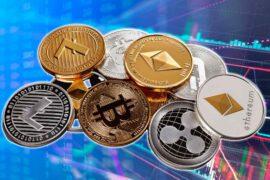
With real interest rates in the negative, and inflation rising, the Chinese economy continued to drive gold prices higher on Monday. Although the country last week raised bank reserve rates by 50 basis points, the impact of the move on slowing down China’s growth is expected to be nominal at best. See the following article from The Street for more on this.
Gold prices rose Monday on high inflation numbers and continued low interest rates in China.
Gold for February delivery added $13.10 to $1,398 an ounce at the Comex division of the New York Mercantile Exchange. The gold price traded as high as $1,400.20 and as low as $1,380.80 during Monday’s session.
The U.S. dollar index was slipping 1.05% to $79.22 while the euro was adding 1.44% to $1.34 vs. the dollar. The spot gold price Monday was up $11.30, according to Kitco’s gold index.
Inaction and high inflation in China were helping gold prices Monday. On Saturday, the country reported that inflation in November jumped to a two-year high of 5.1%, dragging year-on-year growth up to 9.6%. The number was widely expected but so was an interest rate hike, which never came.
At an annual economic policy meeting over the weekend, officials promised a more “prudent” economic policy targeting certain areas for growth and tempering inflation. The expectation is that China will be forced to raise interest rates but officials are putting off this move in order to keep its local currency low for as long as possible.
The delay only adds to negative high interest rates in the country which is a perfect storm for gold prices.
Claim up to $26,000 per W2 Employee
- Billions of dollars in funding available
- Funds are available to U.S. Businesses NOW
- This is not a loan. These tax credits do not need to be repaid
Real interest rates are the interest rate minus the inflation rate. According to reports, one-year deposit rates in China are 2.5% and with inflation at 5.1%, the real interest rate is negative 2.6%.
Gold becomes attractive when rates are negative because the yuan is literally worth less. If real rates are at negative 2.6%, money is being valued at a lower rate gold becomes a safer place to preserve wealth.
China did raise the amount banks must hold in their reserves by 50 basis points Friday to fight inflation, but the move is the sixth time this year and isn’t expected to take enough money out of circulation to tame growth.
The “increasing inflation pressure in China creates a positive environment to future bullion gains with the metals to remain underpinned by dip-buying,” writes James Moore, analyst at thebulliondesk.com in his daily metals report.
Moore also sites uncertainty over eurozone debt as another factor which will continue to support higher gold prices. During times of crises, gold is bought as a safe-haven asset. While the metal is vulnerable to profit-taking as investors may be forced to protect themselves against losses in other assets, threats of default and restructuring will prop up prices.
Although the euro is getting some relief Monday, Moody’s is keeping Spain on its negative watch list, Ireland’s parliament will vote on austerity measures on Wednesday and European Union officials are meeting Thursday and Friday to work on the next plan of attack to contain the debt crisis. Germany has vowed to maintain the euro, but has resisted expanding the current bailout fund or issuing join EU bonds.
In the meantime, gold will be subject to bouts of profit-taking and buying headed into the end of the year. The tug of war promises to trigger volatility and a tight range.
George Gero, senior vice president at RBC Capital Markets, continued “to think [of] $1,375 [as] support and $1,425 [as] resistance.
“I think perhaps we might have a couple sell offs,” says Phil Streible, senior market strategist at Lind-Waldock, “but I still think that prices are ultimately going to wind up near $1,650” at the end of 2011.
Silver prices settled up $1.01 to $29.62 while copper, hit a two-year high, and added 9 cents to $4.20. Silver was helped by the popularity of ETFS White Metals Basket(WITE_), a new physically backed ETF from ETF Securities, which focuses on silver, platinum and palladium.
Each share represents 1 ounce of silver, 0.01 ounces of platinum and 0.008 ounces of palladium. The ETF has only been trading since December 3rd and has risen 0.5%.
Gold mining stocks, a risky but potentially profitable way to buy gold, were trading higher. Freeport McMoRan Copper & Gold(FCX_) hit a new 52-week high and was up 3.70% to $117.04 while Goldcorp(GG_) was 1.30% higher at $46.676. Other gold stocks New Gold(NGD_) and Gold Fields(GFI_) were trading at $9.40 and $18.18, respectively.
Junior miner NovaGold(NG_) was down 0.68% to $15 after the stock was initiated with an overweight rating at JPMorgan(JPM_) with a $19 2011 price target.
This article has been republished from The Street. You can also view this article at The Street, an investment news and analysis site.



